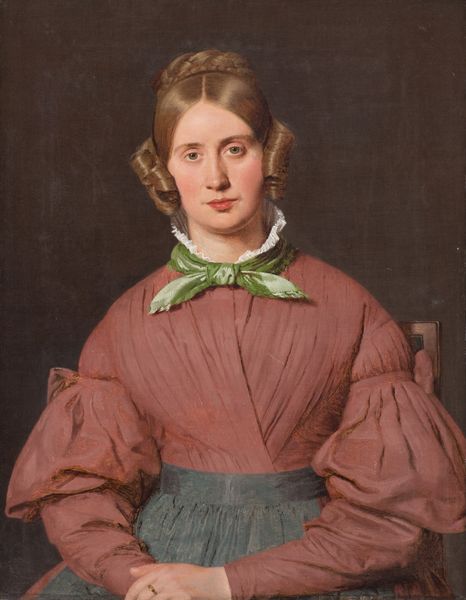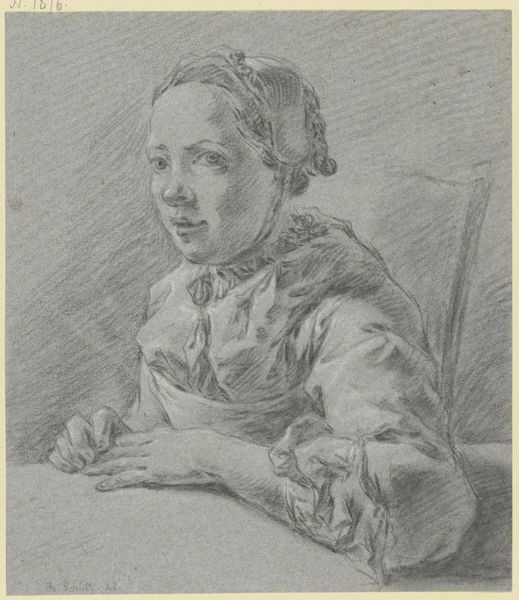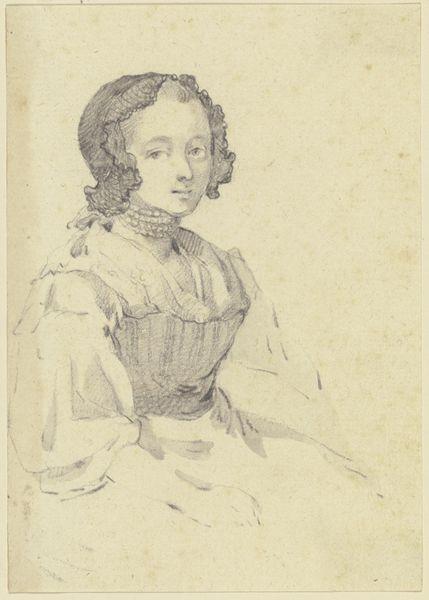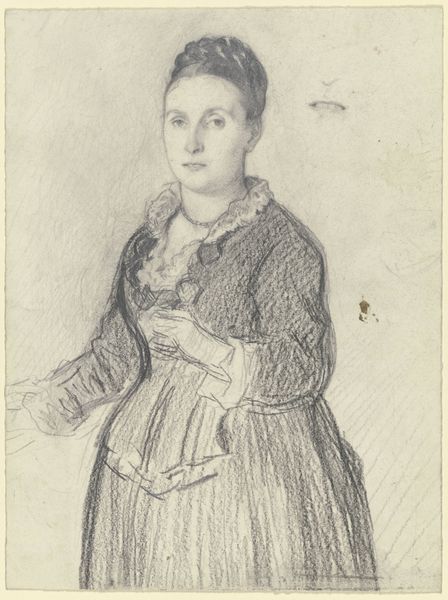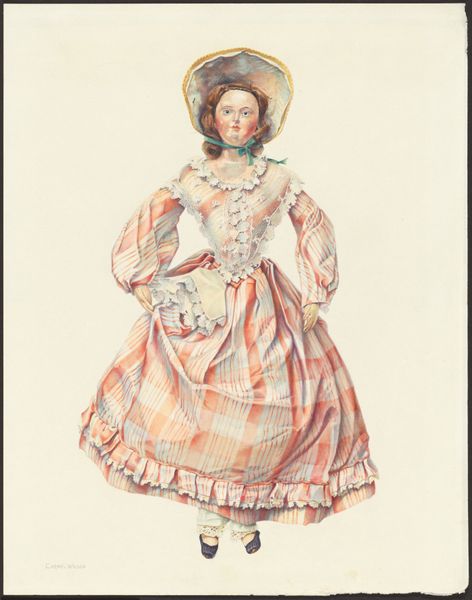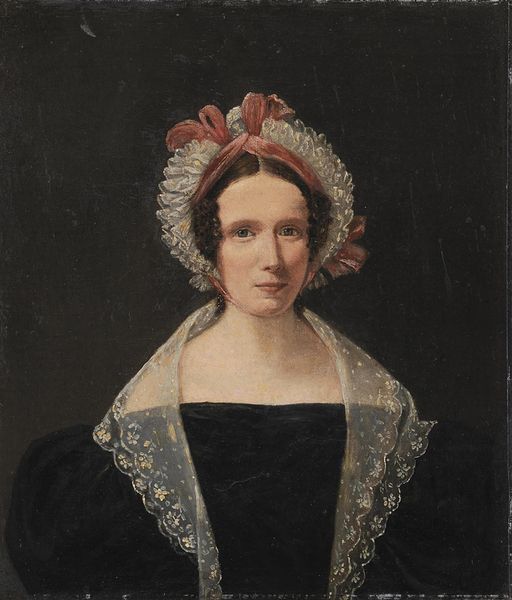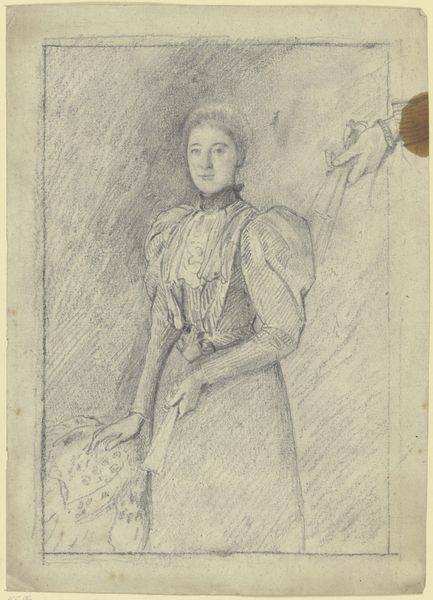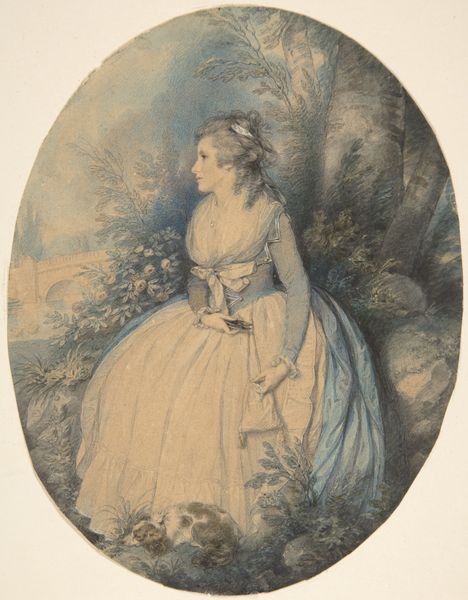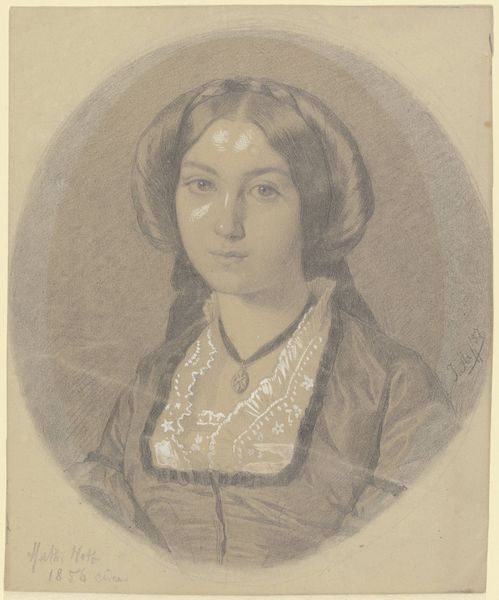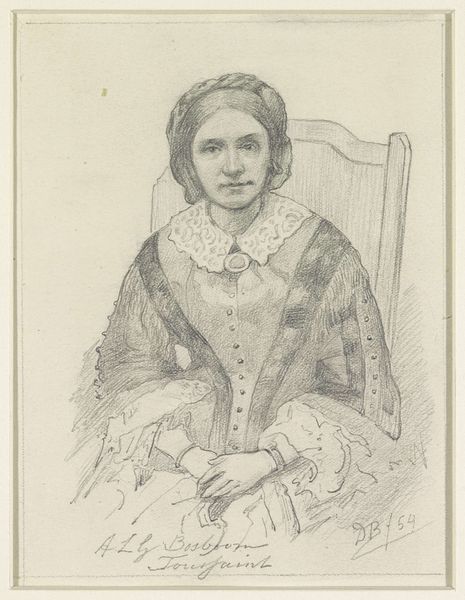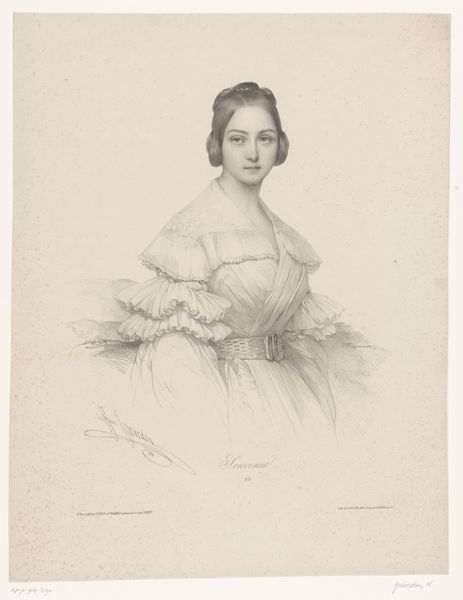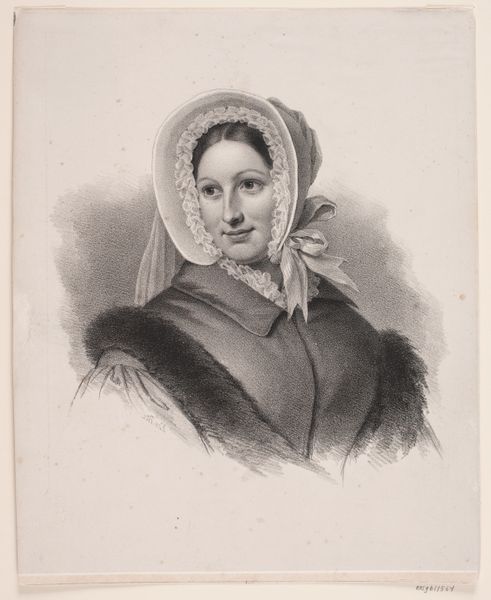
drawing, watercolor
#
portrait
#
drawing
#
landscape
#
watercolor
#
romanticism
Copyright: Public Domain
Editor: Here we have "Bildnis der Schwester des Künstlers," which translates to "Portrait of the Artist’s Sister," attributed to Fritz Bamberger. It’s a watercolor and drawing piece, currently residing in the Städel Museum. The pale colors and soft lines create a delicate and rather wistful mood, but there’s also an odd contrast to the woman’s sharp gaze. How do you read this portrait, particularly in terms of its formal qualities? Curator: Let's examine the interplay of line, form, and color. Observe how Bamberger utilizes the watercolor medium to establish a subdued tonal range. The subtle gradations in the sister’s dress and the landscape effectively structure the pictorial space, creating a tension between the subject and the background. Do you notice how the carefully delineated contours of her face draw your eye, contrasting with the more fluid rendering of the surrounding landscape? Editor: Yes, the precision in her face and the vagueness of the landscape is striking. It’s almost as if she's superimposed rather than integrated into the scene. Curator: Precisely. This dissonance invites further analysis. Note the composition—a centrally positioned figure against a backdrop, typical of portraiture. However, the landscape's romanticized elements subtly disrupt the expected balance. The artist appears less concerned with verisimilitude and more interested in creating a formal dynamic that emphasizes the act of seeing and representation itself. How do you see the significance of her gaze? Editor: Her unwavering stare does suggest self-awareness. The details in the bonnet frame her face, pulling me in further. I also notice how the composition makes her black dress pop, which contrasts against the landscape backdrop of mostly blues and greens. Curator: Her unwavering look functions as an interruption of the aesthetic surface. The interplay between the geometric precision of the portrait’s structure and its interruption asks us to look not just at what is presented but *how* it’s being presented and what those means might imply. It appears less an imitation of something real than a construction of its formal qualities. Editor: So, less about who she is, and more about how she is visually constructed to represent... something. That's fascinating, a whole new way of reading portraits.
Comments
No comments
Be the first to comment and join the conversation on the ultimate creative platform.
